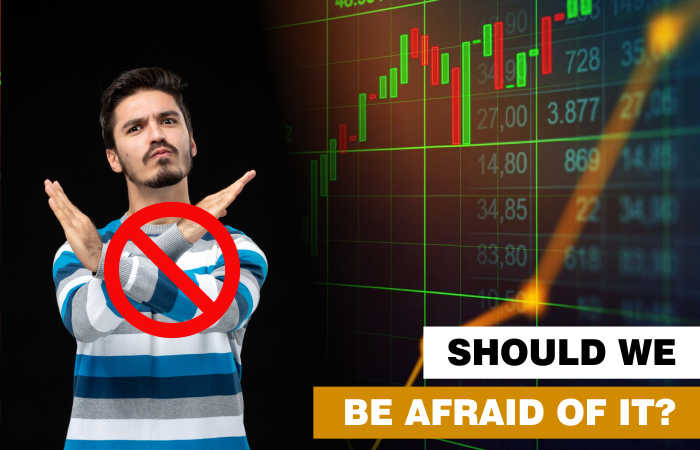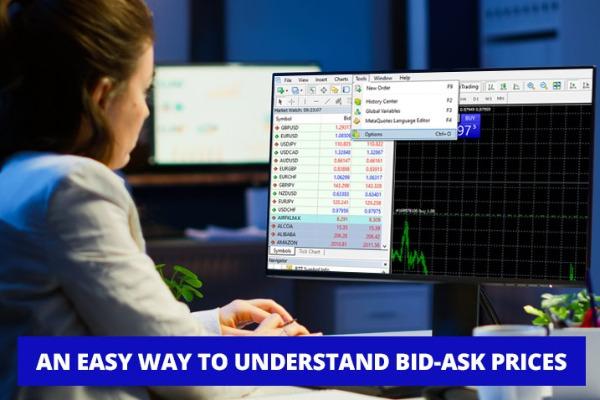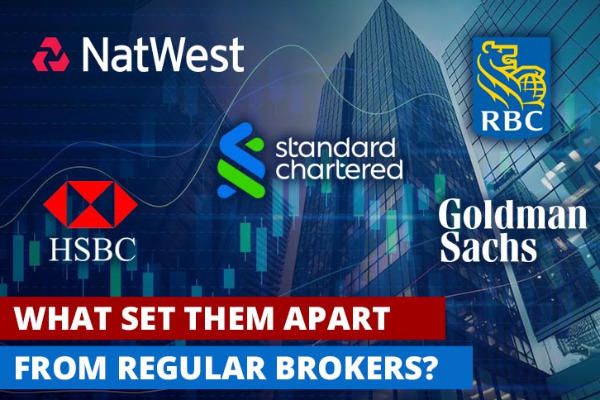Have you ever heard of the term stop out? In forex trading, being stopped out can be a terrifying experience for traders. Let's find out why.
When researching the terms and conditions of forex brokers, have you ever encountered the term stop out? If the answer is yes, have you had an understanding of what it means? Many traders tend to overlook the stop out as they prioritize other aspects such as the lot size, minimum deposit, spread, and leverage.
The truth is, stop out is very important as it is closely related to your trading equity. If ignored, it can be a nightmare that seemingly comes out of nowhere to inform you that your equity has gone down the drain. That's why it is better to understand and familiarize yourself with how stop out works.

What is a Stop Out in Forex Trading?
A stop out refers to an execution of an order by forex brokers to close some or all open positions that go against the traders, resulting in the traders having insufficient funds to continue their trades. This order is executed automatically by the brokers and is meant to protect the trading account and prevent traders from having a negative balance.
Stop out cannot be considered separately from margin call. In fact, margin call acts as a warning system before your floating positions are automatically stopped out by the brokers.
Supposed your broker has a margin call of 50% and a stop out at 20%, this means that the threshold for a margin call is when your trades leave your equity at 50% of the used margin. Let's say the market is moving against you and you end up having equity at 50% of your used margin, you'll receive a margin call that advises you to exit your trades.
What happens if you decide to hold your positions and ignore the margin call warning? Well, if the price keeps moving against your direction and your losses keep increasing to the point where your equity is drained to 20% of your used margin, then your broker will proceed to stop out your trading positions without your consent.
Example of a Stop Out
A stop out level is usually expressed in percentage to represent how many percent of used margin is required to trigger the execution. For your information, a used margin is the total amount of funds required on your trading account to open and maintain all your trading positions.
The formula for used margin:
(Current Price x Trading Size) / Leverage
Example of used margin:
You use a leverage of 100:1 and want to open 2 lots (200,000 currency units) of EUR/USD which is currently priced at 1.4524. Therefore, the used margin is (1.4524 x 200,000) / 100 = $2.904.8. This is the amount you need to deposit in order to open the trade.
From the calculation above, if you trade on a broker that applies a stop out at 100%, your position will be closed when your floating loss leaves only $2,904.8 on your account. This is how to calculate it:
The formula for 100% stop out:
- Equity = Used Margin x 100%
- Equity = $2,904.8 x 100% = $2,904.8
Now, when the broker sets the stop out at 20%, your position will be stopped out when your remaining equity hits $580.96.
The formula for 20% stop out:
- Equity = Used Margin x 20%
- Equity = $2,904.8 x 20% = $580.96
In this scenario, let's say a pip is valued at $20, and you have a $10,000 balance on your account. Thus, for a 100% stop out, the limit of floating loss your account can tolerate is $7,095.2 ($10,000 - $2,904.8). In the market, this translates to $7,095.2 / $20 = 354 pips. Therefore, if the price move against you more than 354 pips, your position will be stopped out.
In an alternative scenario, let's say the margin call level is at 100% while the stop out level is at 20%. This means that instead of getting stopped out, you will receive a margin call when your floating loss is 354 pips. You will be stopped out when your equity takes a further blow to $580.96. In conclusion, your trade can sustain a floating loss of ($10,000 - $580.96) / $20 = 470 pips before your broker executes a stop out.
20% or 100%, Which Stop Out Level is Better?
Learning from the previous example, it can be concluded that both high and low stop out levels have their respective advantages and disadvantages. If a forex broker determines a stop out at 100%, the amount of funds protected will be higher. That said, the potential for getting stopped out earlier also increases.
On the opposite, the advantage of being having a 20% level lies in its lower potential for being stopped out early. The example provided above shows that with the stop out at 20%, you can sustain higher overall losses in comparison to the 100% level. It can give more room for your trades should the price reverts back to a direction that benefits you. Nevertheless, the total funds remaining on your trading account will be significantly lower. From the previous example, the stop out at 100% will leave a $2,904.8 balance, but only $580.96 will remain with a 20% stop out.
You can choose the best stop out level based on your own preferences. For example, do you prefer to protect more funds on your account and don't mind accepting the risk of getting stopped out sooner? Or, do you prioritize more rooms for reversals and have no problem with small remaining funds when your trades are eventually stopped out? If the former suits your trading styles and needs, then a high stop out level is the best option for you. But you have a high tolerance of loss, you may pick a low stop out level.
How to Prevent a Stop Out?
Stop out is perhaps the worst scenario that could happen to traders, as the order acts as evidence that the funds on your trading account have been exhausted. In other words, there is no more equity left to open and maintain transactions.
In order to prevent a stop out, there are several ways you can plan:
- Be cautious when ing leverage. If you choose low leverage, just make sure you have enough funds to retain your open position. However, if you trade with a high leverage ratio, you better pay close attention to how much floating loss your account can sustain.
- Minimize your risks. Don't be careless when you open multiple positions, and always monitor your used margin and available margin. You can use a margin calculator for a quick and easy calculation.
- Use stop loss. This way, you can limit your losses so that your losing position is closed before your diminishing equity reaches a stop out point.
- Control your trading emotions. Don't be greedy and don't open multiple positions when you don't have solid planning, or worse, when you just want to take revenge on the market.
What to Do When You Are Stopped Out?
Basically, there is nothing you can do if you are stopped out by your broker. However, you must anticipate a stop out immediately after receiving a margin call. Don't be anxious. There are three measures you can and should do when receiving a margin call and a stop out is approaching.
1. Add Funds into Your Trading Account
By depositing money, you will straight away increase your balance. Automatically, the margin level will increase, thus freeing you from the impending stop out.
2. Close Trading Positions Manually
You will minimize your loss if you close your open positions by yourself before your broker does it for you. In turn, your margin call level will also increase.
3. Apply a Hedging Strategy, Provided That You Have the Know-How
Implementing a hedging strategy can be an alternative solution as far as a margin call is concerned. However, this measure is recommended only if you have the necessary skill to do so. If applied improperly, you may end up getting stopped out sooner.
Final Words
It is very important to learn about stop out. More often than not, unsuspecting traders will be perplexed when their positions are suddenly closed automatically. Some traders even get so upset that they accuse their brokers of committing fraud. In fact, stop out is actually quite necessary.
If a floating loss exceeds all the funds on your account but your broker cannot close the trade, your balance will turn negative and you will owe money to the broker. Such incident may happen but it's usually prompted by an unprecedented market movement that is very rare. Oftentimes, stop out is quite effective to protect your account from having a negative balance.

 Dedicated FREE FOREX VPS
Dedicated FREE FOREX VPS Free FOREX Virtual Private Server
Free FOREX Virtual Private Server MT4 Demo Contest, Get $500
MT4 Demo Contest, Get $500 Sign Up for an Account, Claim 60% Deposit Bonus
Sign Up for an Account, Claim 60% Deposit Bonus Free MT4/MT5 VPS 2024
Free MT4/MT5 VPS 2024 Send E-mail and Get Free Merchandise
Send E-mail and Get Free Merchandise $1K Refer a Friend Bonus for Pepperstone Pro clients
$1K Refer a Friend Bonus for Pepperstone Pro clients Maximize Your Earnings with 100% Deposit bonus
Maximize Your Earnings with 100% Deposit bonus Trade to Win, $5,000 Monthly Demo Contest
Trade to Win, $5,000 Monthly Demo Contest Claim 30% + 15% Deposit Bonus from LiteFinance
Claim 30% + 15% Deposit Bonus from LiteFinance












5 Comments
Erik
Feb 21 2023
I have a possibly unique case of stop out and margin call. It is based on my friend's experience. So, my friend overtraded due to higher leverage. Because of this, the margin call was alarmed and suddenly my friend's trade was stopped and because of this he suffered a huge loss.
And meanwhile, as i know, margin call is alarm for trader to deposit more money before stop level is reached. I mean, in the article, the author talked about the definition of stop out. He says it is the execution of one order by a Forex Broker to close all open positions that causes the trader to lose money due to insufficient funds to continue trading.
So, what is the feature that caused my friend to lose his trade, is it a margin call or a stop out?
Todds
Feb 21 2023
Erik: I think it's because your friend is trading with a broker whose margin call is equal to the stop loss. Some brokers offer a margin call that same level stop out, and because of this, the trader should be really careful because when the margin call alarms, the stop order is automatically triggered. The advantage of this term is that the amount will be limited as a result of you losing money, but the downside is that your trading opportunities will also be very limited.
Meanwhile, some brokers also have a spread between margin call and stop trade. So when the margin call alarm comes, the trader will be ready to deposit, giving the trader a chance to rethink the deposit and strategy.
And because the stop is lower, the chances of a bounce are also higher.
Justin
Feb 21 2023
First of all, thanks for the article. I can actually tell how much equity can approach the stop. But, sorry to say, I mean I don't quite understand stop out based on equity. Is there a way to know if a margin call or a stop order will occur with percentage?
The author talked about Stop Out when the equity reaches a certain amount. Meanwhile, in the metatrader, I don't know exactly when the equity will reach the margin call level. while margin call and stop levels are also based on percentage. I mean can I know margin call and stop if my capital can become percentage?
Theo
Feb 21 2023
Justin: You can also count your margin level or you can view the margin level on Metatrader. Quite simply, if your margin (percentage) is close to your margin call or stop level, you will see the margin percentage. For example, you may see that the margin is 300% while the margin call is 100%, so your trades will be safe.
Meanwhile, to count the margin you just need to calculate by the Formula:
Equity-Margin divided by margin multiplied by 100%. But you can also try to learn how to tally with the suggested article because you will know exactly how your equity is while the percentage is just that you don't know the exact amount .
Potter
Feb 21 2023
I agree with the author. As a smart trader, we must know all the terms and conditions set by the broker, especially the negative balance protection listed in the broker. While the purpose of negative balance protection is good, it is to prevent a trader's funds from going negative and possibly becoming a liability to the broker, but most traders, I agree with this author, many of traders accused the broker of defrauding them.
With this article, I think new traders should learn about stop out because this feature can force all trading positions against the trader to be closed and the trader will often suffer huge losses. And for this, many traders will blame the broker. Thanks for the article, author!!
Better to stop than to be in debt to the broker, right?